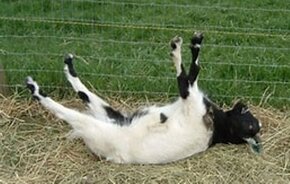
Image Source: pinterest.com/574631233687719039/
It took me eighty-three years to hear about fainting goats? What have I been doing with my life?
And then I learned that this variety of goat serves no different purpose than any other goat other than to be studied for scientific research. Leave it to the Americans! I don’t believe that it was bred for that purpose but there you are…!
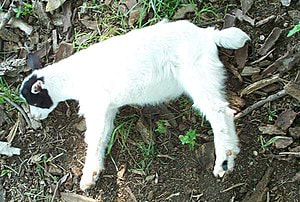
Myotonic, not bionic. This doesn’t have anything to do with superhero goats, either.
◄ mage Credit: Redleg at English Wikipedia
Image Source: commons.wikimedia.org/2005183
Myotonia is a medical term meaning the inability to relax voluntary muscle after vigorous effort.
This Tennessee-bred goat is characterized by a hereditary condition called myotonia congenita that causes it to stiffen or fall over when excited or startled. It is also known as the fainting goat, falling goat, stiff-legged goat or nervous goat.
Fainting Goats were first brought to Marshall County, Tennessee, in the 1880s, by a farmer named John Tinsley, but no one is admitting from whence they came. A fainting goat was donated to A. & M. College in Texas (1929), by a Dr. White who stated he had seen them in Egypt, However, the Hippocratic Corpus (4th Century BC) includes analogies between goats ‘that spasm’ and humans with certain illnesses, so they must have been around for a while. Now, most of them are in Marshall County, Tennessee.
With a population of slightly over 34,000 people in 2020, Marshall County, Tennessee has one claim to fame: The Annual Goats, Music, and More Festival.
The myotonic goat was first described in modern scientific literature early in the 20th century. Several research studies were done in the 1920s and 1930s which were important to clarifying the role of chloride in muscle excitation and contributing to understanding the physiological basis of this condition. The mutation in the goat gene that causes their muscle stiffness wasn’t discovered until 1996, several years after the equivalent gene had been discovered in humans and mice.
Congenital Myotonia also exists in humans and is known as chloride channel disorder. In humans and goats, the condition can range from mild to severe and doesn’t control daily living. Both goat and human can go about a normal life. While there is no cure or treatment for a congenital condition, there are ways to control and manage symptoms.
WHAT HAPPENS?
Myotonia is simply a genetic stress response to a startling situation.
When something startles or excites these goats, the muscles of the fainting goats freeze for about ten to twenty seconds. The younger animals stiffen and fall over. Older animals can get used to their problem and can learn to stay upright. Their muscles still tense up and freeze, but they might be able to mitigate or prevent the fall, staying on their feet until the condition relaxes. The goat, when in this condition, doesn’t feel pain, and even though its body is paralyzed the goat remains conscious.
Without going into a medical discussion of the genetic defect which I don’t pretend to understand, here is a fairly simplistic description about what happens.
Imagine how it feels to be startled. You feel the visceral reaction with your muscles tensing and body parts seeming to move around inside. Then you may cry out. Your brain has sent a signal to “Freeze; there is a potential threat.” In about three seconds of receiving the first signal, your muscles get a second signal to relax. Then your body kicks into fight or flight mode.
In normal goats, the initial tensing is followed by an almost-immediate relaxing of the affected muscles which allows the animal turn and run away from a perceived threat. With myotonia congenita, however, the muscles tense and stay tensed for 10 to 20 seconds before slowly relaxing. The muscles of the myotonic goat got the signal to tense but it continues with “keep tensing”, not the “relax” which normally comes quickly. The animal panics and collapses on its side, still stiff. The reason this happens is the genetic disorder part that’s complicated.
https://youtu.be/NmMKaBL7mks
https://youtu.be/YI4hzzepEcI
https://youtu.be/7TuyqX_Udb8
There are physical differences between this breed and others. They have wider, stockier bodies, larger heads, heavier mass, and high muscle density.Fainting goats are said to be quieter than other breeds, but from watching the videos, they look rather energetic. They are vigilant and very trainable, highly adaptable to low-input farmlands and foraging, and very good with children.The animals come in various sizes and almost all goat colors, from 60 to 175 pounds and are about 20 inches tall. The males are often twice as big as the females. They are not as good at jumping or climbing as other breeds and less capable from escaping their pens.
They have a higher meat-to-bone ratio than their normal-sized kin and less fat. However, because of their high risk status, fainting goats are currently listed as “recovering” by The Livestock Conservancy, so they’re not slaughtered as often as other breeds. It is perfectly safe to eat their meat.
Most goats are horned, and their horns vary from large and twisted to small and simple; most have short hair but long-haired goats are not unusual. They live for ten to twelve years.
Fainting Goats are generally adored by their owners, fainting notwithstanding. Unfortunately, within the last five years, the Fainting Goat has been listed as “at risk” in the database of the Food and Agriculture Organization of the United Nations which means the breed itself has a low enough population that it is threatened. According to the International Fainting Goat Association, there are around 10,000 fainting goats in the world.
JUST SAYIN’!
Sources:
https://en.wikipedia.org/wiki/Fainting_goat
httpswww.pinterest.compin724516658777221584
http://damnfreshpics.blogspot.com/2010/10/fainting-goats.html
https://www.nhm.ac.uk/discover/why-do-goats-faint-and-scream.html
https://learnnaturalfarming.com/fainting-goat-characteristics/
https://petkeen.com/fainting-goats/
https://www.thoughtco.com/fainting-goat-4691940
https://weirdcooldumb.com/fainting-goats-origin-term-scapegoat/
https://modernfarmer.com/2014/07/can-eat-fainting-goats/
https://en.wikipedia.org/wiki/Food_and_Agriculture_Organization
https://acreagelife.com/hobby-farming/5-things-you-might-not-know-about-fainting-goats/
Photos only
https://www.instagram.com/p/CXKgxhrtQKa/?utm_source=ig_embed&ig_rid=73d0248d-8fcf-4f3e-bb19-6c4c9ac2f620
https://www.bing.com/videos/search?q=fainting+goats&qpvt=fainting+goats
https://www.pinterest.com/pin/574631233687719039/
http://goatsmusicandmore.blogspot.com/
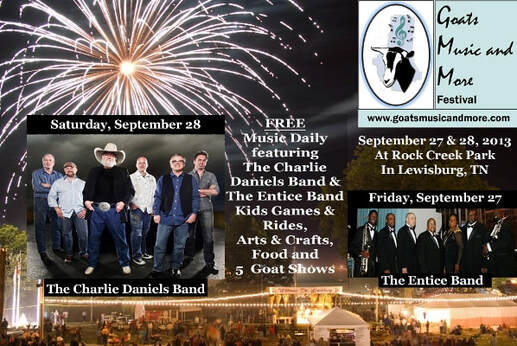
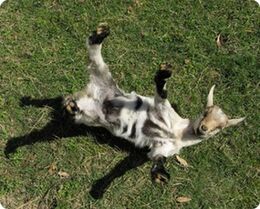

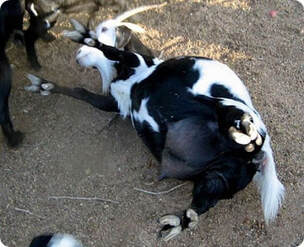
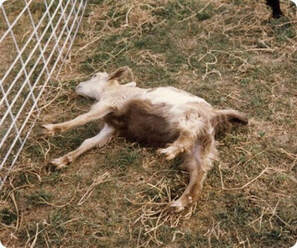
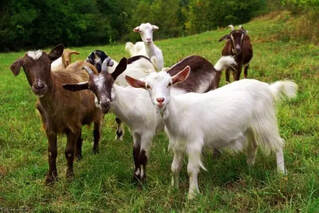
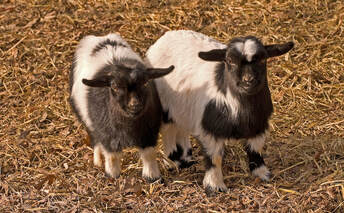


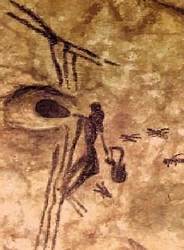
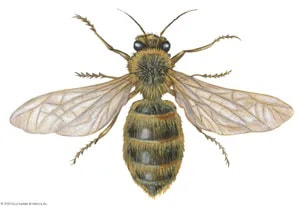
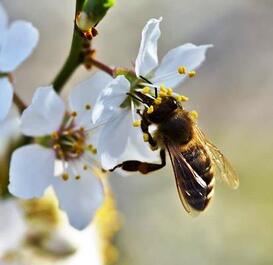
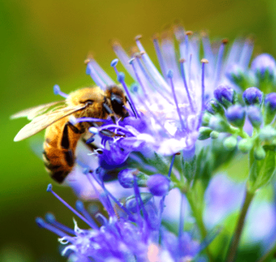
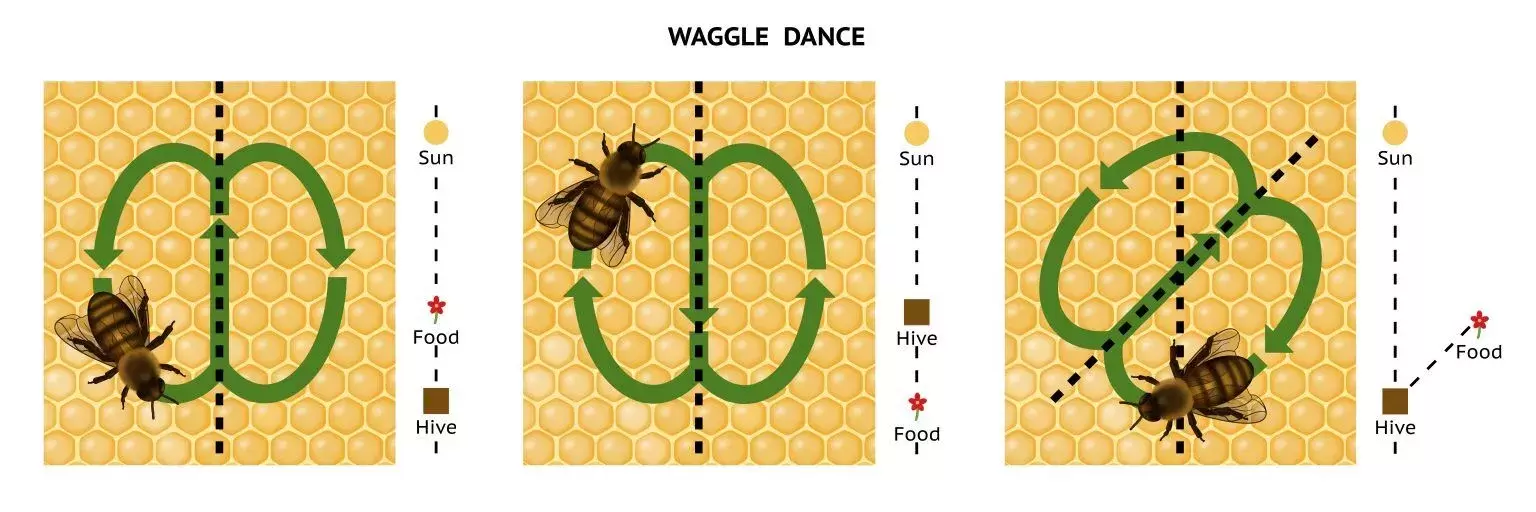
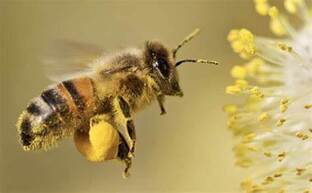
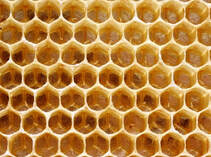
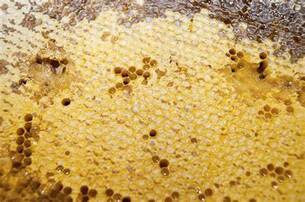


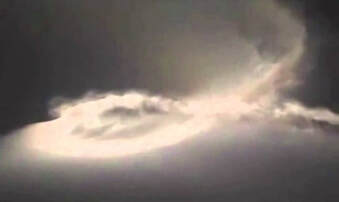
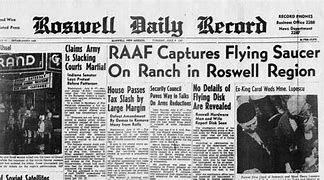
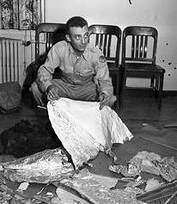
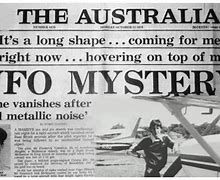


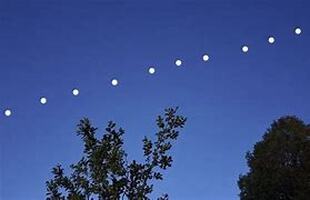

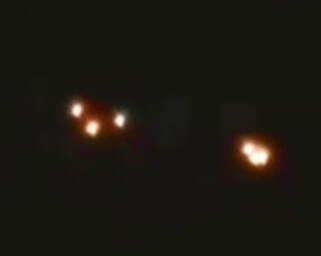




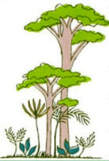




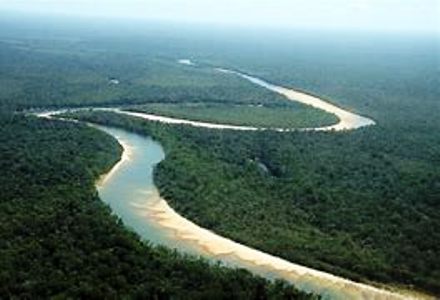


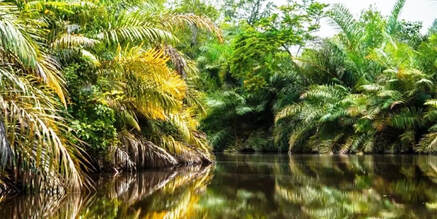










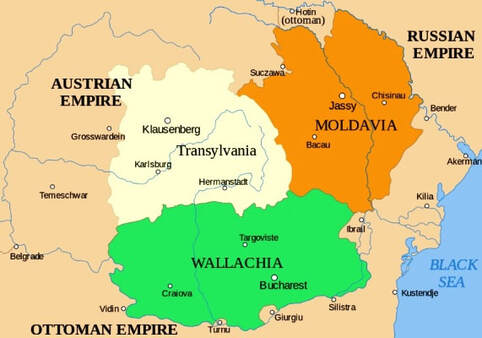
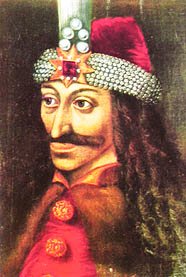
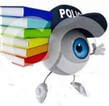


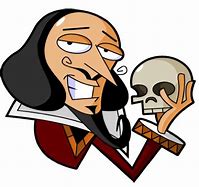
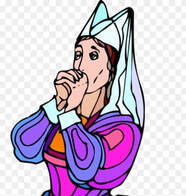
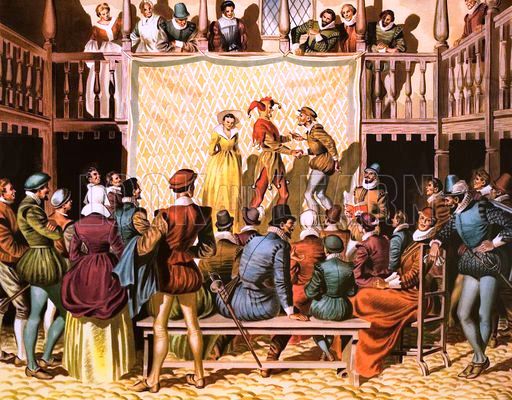











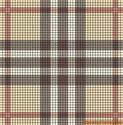




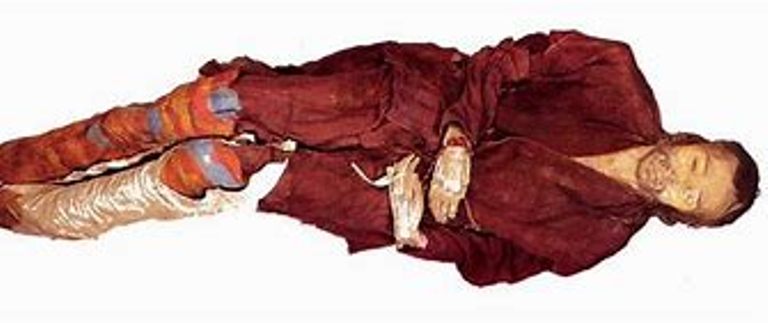
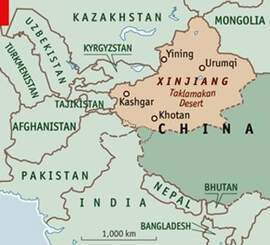





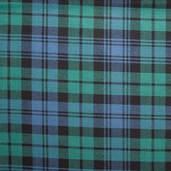
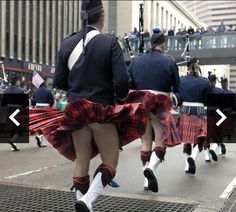

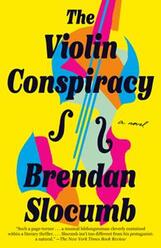
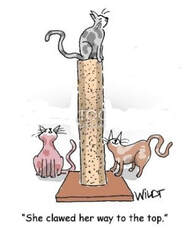
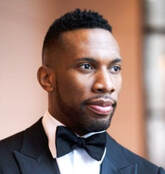
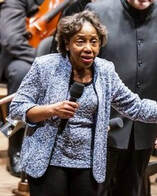

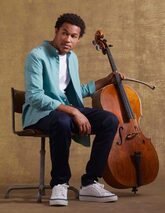


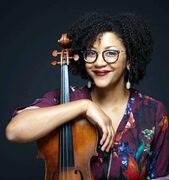


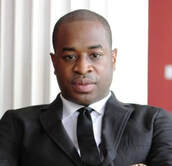

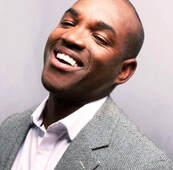
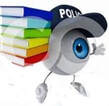
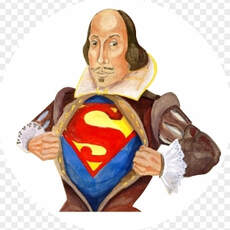



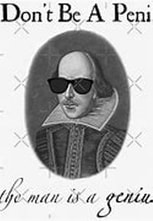
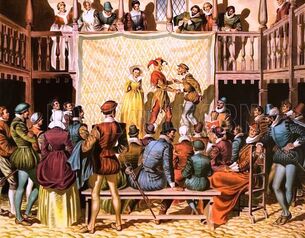
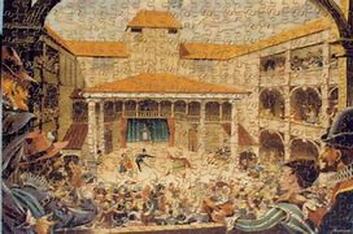


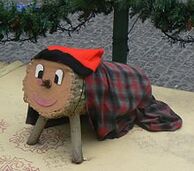
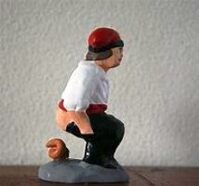

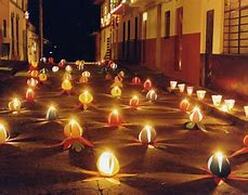

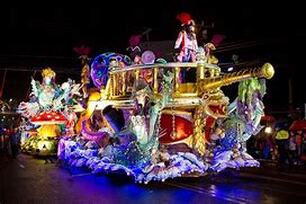

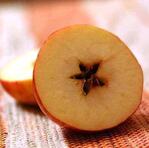




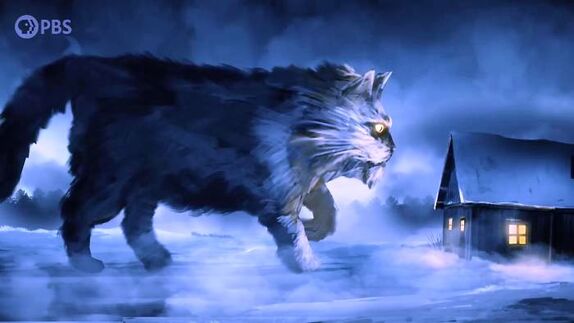


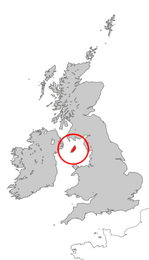
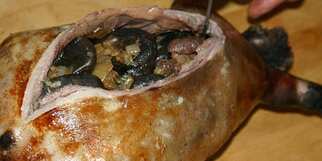







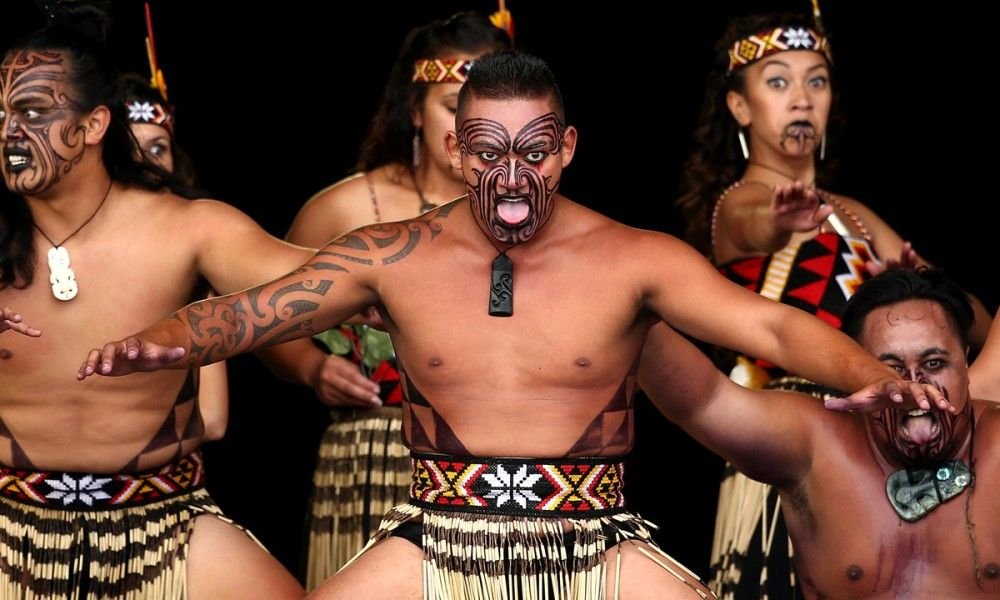

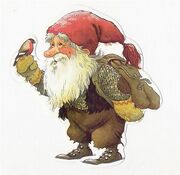





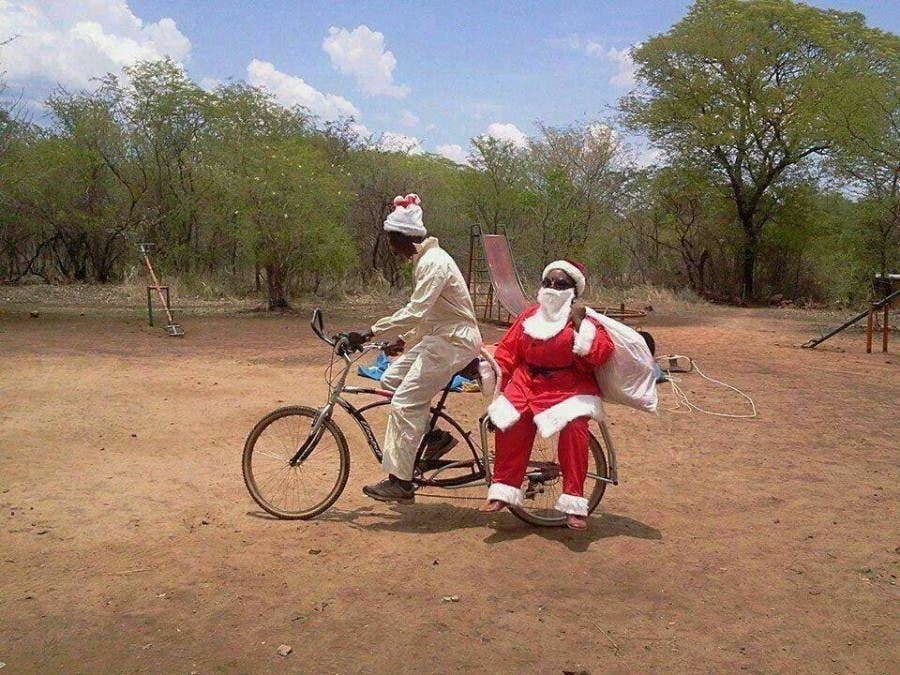
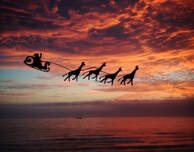



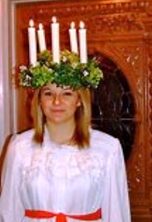



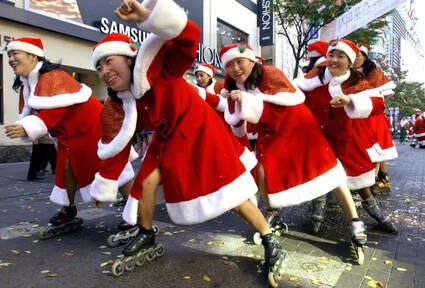

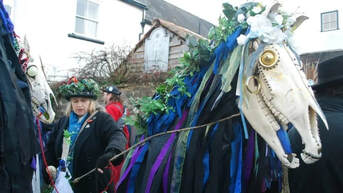
 RSS Feed
RSS Feed